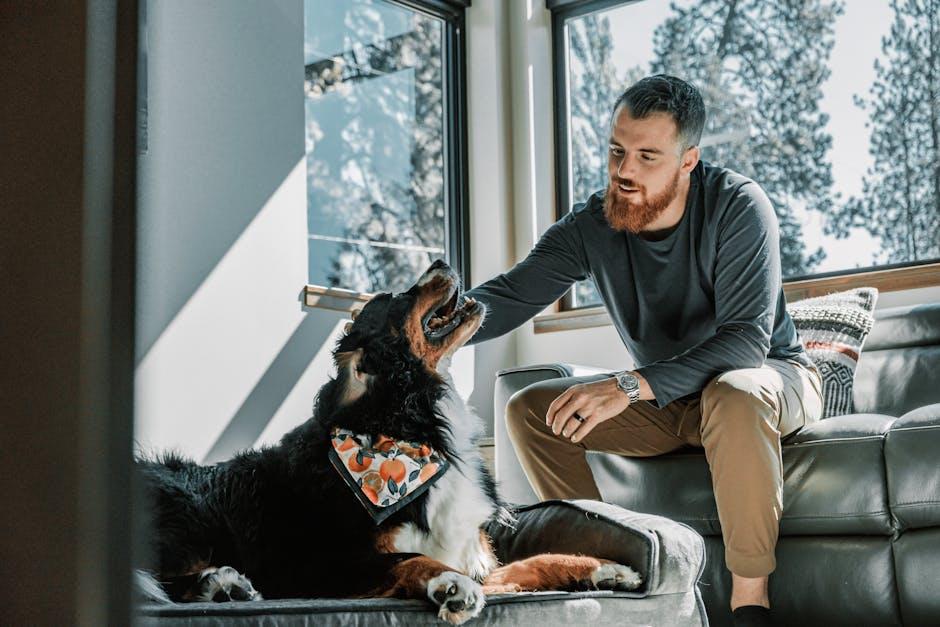When our furry companions find themselves in distress, it’s our instinct to rush to their aid with love and care. One of the most alarming situations a dog owner can face is a choking emergency. In those critical moments, knowing exactly what to do can make all the difference. This guide is designed to equip you with the knowledge and confidence needed to handle such emergencies calmly and effectively. We’ll walk you through the signs of choking, the steps to take, and how to prevent these incidents in the future, ensuring that your beloved pet stays safe and sound. With a little preparation and understanding, you can be your dog’s hero when they need it most.
Recognizing the Signs of Choking in Dogs
Understanding when your furry friend is in distress can be lifesaving. Dogs can’t tell us when they’re in trouble, so it’s crucial to recognize the signs of a blocked airway. Some of the most common indicators include:
- Coughing or gagging: If your dog is suddenly making choking sounds, they might be trying to dislodge an object.
- Pawing at the mouth: A dog may instinctively try to remove the obstruction by using their paws.
- Difficulty breathing: Watch for labored breathing or wheezing, as these are red flags.
- Excessive drooling: Unusual salivation can indicate distress.
- Panic or agitation: A dog in discomfort might become restless or show signs of anxiety.
Recognizing these symptoms early can make all the difference. Stay calm and be ready to act swiftly to provide the help your dog needs.
Immediate Actions to Take When Your Dog is Choking
When you notice your furry friend struggling to breathe, swift action is crucial. Begin by remaining calm to ensure you’re making clear decisions. Check your dog’s mouth for any visible obstructions. If you can safely remove it with your fingers, do so carefully. However, avoid using tools that could push the object further down.
If the object is not visible or can’t be removed, try the following methods to dislodge it:
- Back Blows: Position your dog with its head lower than its body. Using the palm of your hand, deliver a firm blow between the shoulder blades.
- Abdominal Thrusts: For medium to large dogs, wrap your arms around the waist, placing a fist just below the rib cage. Apply quick, upward thrusts. For smaller dogs, use gentle pressure with two fingers instead of a fist.
If these steps don’t resolve the issue and your dog continues to show signs of distress, seek veterinary assistance immediately. Your swift and calm response can make all the difference. Remember, prevention is key; keep small objects and hazardous foods out of reach to avoid future choking hazards.
How to Perform the Heimlich Maneuver for Dogs
When your beloved canine companion is in distress, quick action can make all the difference. If your dog is choking, it’s crucial to stay calm and perform the Heimlich maneuver correctly. Begin by assessing the situation: if your dog is coughing forcefully or making noise, they might be able to dislodge the object themselves. However, if they are silent, gagging, or pawing at their mouth, it’s time to step in. Ensure your safety first; a panicked dog might accidentally bite.
To perform the maneuver, follow these steps:
- Small Dogs: Gently pick up your dog and turn them upside down with their back against your chest. Using the heel of your hand, apply firm pressure just below the rib cage, pushing inward and slightly upward.
- Large Dogs: If your dog is standing, place your arms around their waist. Make a fist with one hand and place it just below the rib cage. Grasp your fist with the other hand and apply a quick, firm thrust inward and upward.
Check the mouth after each attempt to see if the object has been dislodged. Even if the object is removed, it’s wise to consult your veterinarian to ensure no internal damage has occurred.
Preventing Future Choking Hazards in Your Home
To create a safer environment for your furry friend, it’s essential to identify and remove potential choking risks in your home. Start by evaluating common areas where your dog spends most of their time. Scan for small objects that can easily be swallowed, such as coins, buttons, or children’s toys, and ensure these items are stored securely out of reach. Inspect their play area regularly, checking for any broken or worn-out toys that could splinter or break into smaller pieces.
Consider implementing the following practices to further safeguard your pet:
- Choose appropriate toys: Opt for toys that are durable and sized correctly for your dog’s breed and size.
- Supervise during meals: Monitor your dog’s eating habits to prevent them from swallowing food too quickly, which can lead to choking.
- Educate family members: Make sure everyone in the household is aware of the potential hazards and knows how to keep the environment safe for your dog.
By taking these proactive steps, you can help minimize the risk of choking incidents and ensure a secure, happy home for your beloved canine companion.

